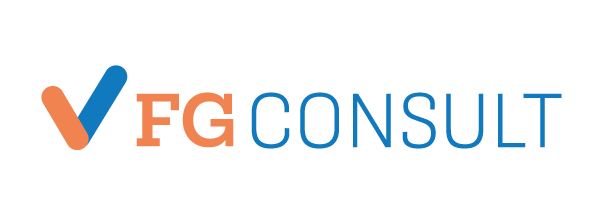Understanding Agile Product Backlog And Product Roadmap
Содержание
Make sure to identify the dependencies in your backlog before updating it with new tasks. Product Backlog Refinement adding detail, estimates, and order to items in the Product Backlog. This is an ongoing process in which the Product Owner and the Development Team collaborate on the details of Product Backlog items. During Product Backlog refinement, items are reviewed and revised. However, they can be updated at any time by the Product Owner or at the Product Owner’s discretion.
This length helps people stay productive without burning out. Unlike other Scrum meetings, I do not think the product backlog refinement meeting requires the participation of the whole team. You must carefully establish what “Ready” means for you and your team. When we use “Ready,” we are talking about a small checklist of items that your team must complete before you can include a product backlog item in a sprint. The practice is of great help in setting some limits to what your development team will need to do to get an individual job done. Once you’ve finished the backlog refinement meeting with your team, you can share your template with others as an image or PDF.
How To Work With The Product Backlog
Only the Development Team can assess what it can accomplish over the upcoming Sprint. The Product Backlog lists all features, functions, requirements, enhancements, and fixes that constitute the changes to be made to the product in future releases. The earliest development of it only lays out the initially known and best-understood requirements. The Product Backlog evolves as the product and the environment in which it will be used evolves.

It is a cohesive unit of professionals focused on one objective at a time, the Product Goal. The Scrum Team commits to achieving its goals and to supporting each other. Their primary focus is on the work of the Sprint to make the best possible progress toward these goals.
By the time everyone knows what’s what, you have 10 minutes left to add depth to user stories, hold detailed discussions, or estimate effort. Whereas starting the week with backlog refinement might provide a nice way of easing into that week’s work. Having a weekly refinement session helps your team to keep their finger on the pulse of the backlog without it becoming overwhelming.
Monday Products
We know that Sprint Planning comes at the start of the Sprint.
Sorry, I added my answer before realizing this was on stackoverflow, not pm.stackexchange.com. Update the question so it can be answered with facts and citations by editing this post. Estimate the story size of each issue with your team members.
Tl; Dr: Product Backlog Refinement First Principles
Scrum is built upon by the collective intelligence of the people using it. Rather than provide people with detailed instructions, the rules of Scrum guide their relationships and interactions. The purpose https://globalcloudteam.com/ of Product Backlog Refinement is to add details, estimates and order to the Product Backlog and it’s Product Backlog Items. During Product Backlog Refinement, items are reviewed and revised.

For requirements that move up in priority, the estimation serves as an indicator of when it has been broken down small enough to fit into a sprint. The Product Owner does not need to attend the Daily Scrum but if they do, they should take no active part in it and simply observe. The Daily Scrum is a 15-minute time-boxed event for the Development Team to synchronize activities and create a plan for the next 24 hours. As a product is used and gains value, and the marketplace provides feedback, the Product Backlog becomes a larger and more exhaustive list. Requirements never stop changing, so a Product Backlog is a living artifact.
The Sprint Review should never be considered a gate to releasing value. It is a highly visible, real-time picture of the work that the Developers plan to accomplish during the Sprint in order to achieve the Sprint Goal. Consequently, the Sprint Backlog is updated throughout the Sprint as more is learned.
Top 7 Ways To Get Stakeholders To Attend Sprint Reviews
It is timeboxed to a maximum of three hours for a one-month Sprint. The most impactful improvements are addressed as soon as possible. They may even be added to the Sprint Backlog for the next Sprint. The purpose of the Sprint Retrospective is to plan ways to increase quality and effectiveness.
In general, we have found that smaller teams communicate better and are more productive. If Scrum Teams become too large, they should consider reorganizing into multiple cohesive Scrum Teams, each focused on the same product. Therefore, they should share the same Product Goal, Product Backlog, and Product Owner. These values give direction to the Scrum Team with regard to their work, actions, and behavior.
- This length helps people stay productive without burning out.
- Executives Activate imagination and innovation across all your teams.
- It is the result of collaboration between the product owner and stakeholders .
- When you are racing to ship at the end of the Sprint and can see your calendar filled with meetings, it can be pretty stressful.
- Product managers have to balance the needs of their stakeholders, their team and their project objectives.
As time goes on and Sprint Velocity improves, you may want to make coordinated refinement meetings less frequent – weekly or once per Sprint. You can think of the product backlog as a team to-do list of increments of work that need to be completed to move the product forward in a meaningful way. Keep your team focused on their sprint with workflow automation and task approvals.
Scrum engages groups of people who collectively have all the skills and expertise to do the work and share or acquire such skills as needed. As Scrum is being used, patterns, processes, and insights that fit the Scrum framework as described in this document, may be found, applied and devised. Their description is beyond the purpose of the Scrum Guide because they are context sensitive and differ widely between Scrum uses. Such tactics for using within the Scrum framework vary widely and are described elsewhere. PBR session increases the efficiency of the team due to the knowledge shared among the team members.
Learn More About The Scrum Events
At this point, we’ll have the sprint backlog, which is composed of the history of that specific iteration . In Planning, Majorly team decides what can be achieved in a sprint. Value of the sprint and plan on how we will be achieving the targets.
Who Should Attend Backlog Grooming Meetings?
Have an agenda with goals clearly stated and make sure all assembled are aware of what those goals are and how they’re expected to contribute to achieving them. Know what must be done, and only meet maybe every two weeks for an hour or two. Many people are using the backlog, and so when it’s updated that information is disseminated throughout the team. That means that everyone is on the same page, but it’s also a two-way street.
Scrum Theory
They’ll also add new user stories that are necessary due to newly discovered insights from users. If there are large user stories, called epics, these are broken down into smaller ones. Teams will also reevaluate priorities and reorder user stories as needed. Call the review what you want, but they’re most commonly referred to as “backlog grooming” or “backlog refinement” within the Agile methodology. That way, they’re front and center and don’t require any digging when planning your next sprint. The level of detail for each item will often decrease the further down the list you go.
However, once someone runs a number of these, you can start making rough time estimates about how long it will take that runner to run similar courses. Before your team begins a Scrum sprint, you need to know where you’re going. By asking these questions earlier, the product owner is given a chance to arrive at answers to any questions he or she may not be prepared to answer immediately. The input to this meeting is the Product Backlog, the latest product Increment, projected capacity of the Development Team during the Sprint, and past performance of the Development Team. The number of items selected from the Product Backlog for the Sprint is solely up to the Development Team.
This daily practice is especially important for the Product Owner, who holds overall responsibility for the backlog. As with all things in agile, reviewing the backlog daily isn’t a strict rule, but a guide. A well-refined backlog makes the Sprint Planning process a lot easier because there are already well-defined items that can be pulled off the backlog to be built. The product backlog in its simplest form is a list of improvements to be made to your product.
This resulting plan is created by the collaborative work of the entire Scrum Team. They do this by enabling the Scrum Team to improve its practices, within the Scrum framework. If any aspects of a process deviate outside acceptable limits or if the resulting product is unacceptable, the process being applied or the materials being produced must be adjusted.
You’ll want to prioritise thinking about items near the top of the backlog, since they are most likely to be taken forward for the next Sprint. It might just be a 5-minute scan of the backlog with 2-3 minutes adding some additional detail every day or two. All of this helps teams arrive at clearly defined and prioritised blocks of work that can be taken forward into the next sprint. That provides a loose idea of how much time to spend on it, but how and when you refine your backlog remains a mystery. With a well-groomed backlog, no one needs to ask another person what’s going on.
